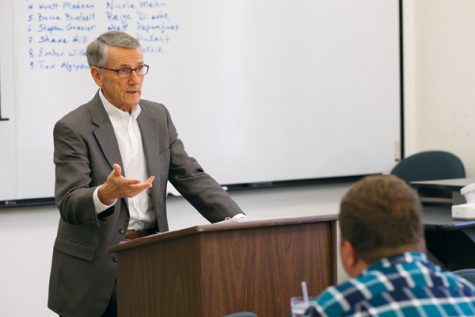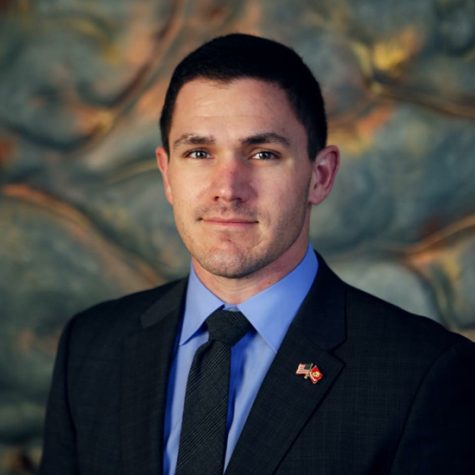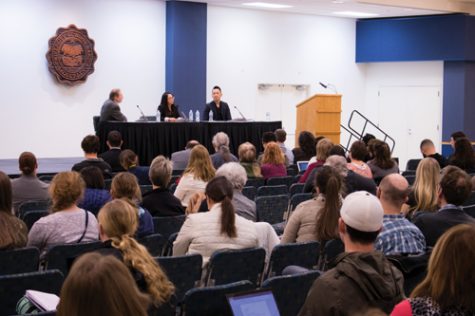From the Editor-in-Chief
Accepting the Bias
September 12, 2017
In these times of “alt-right” or “alt-left” thinking and media sources disguising themselves as “fair and balanced,” readers might find themselves thinking, “I just want the facts without the bias.”
I’ve often thought this myself. I become more and more frustrated as media outlets choose provocative commentary over news. This frustration led me to search for something – anything – to give me reason to believe media culture would improve. Eventually I found and read “The News” by Alain de Botton, a book that examines the evolving role of media in the world.
While the book makes several arguments, the one that intrigued me the most stated “a bias simply indicates a method of evaluating events that is guided by a coherent underlying thesis about human functioning and flourishing.”
In other words, it isn’t necessary to demonize the word “bias,” we simply need to acknowledge it. This idea caused me to re-examine everything I know about the media, and whether or not exposing my personal bias is something I should refrain from in my reporting.
To be unbiased is not possible. A writer’s views always find their way into the story. Case in point: by even writing this column, I’m making it clear that I find media bias to be an issue in the first place, whereas others may believe there isn’t an issue. By simply choosing to write this, I’ve exposed a bias.
This subtle indication of my personal views comes through in a way that affects readers differently. Maybe you noticed my bias right away, maybe you never considered the implication. Either way, you know it’s there. You can sense it in the tone and flow of the sentences.
Bias can be as blatant as political pundits stating their views outright, or as subtle as a reporter choosing a specific person to interview, knowing full well what the person’s views are beforehand. Meaning, for example, if I ask President Donald Trump if he believes illegal aliens should be deported, it should come as no surprise when he says “yes.”
This selective interviewing ensures that the angle a reporter – or a media outlet in general – is trying to convey will make it into the story seamlessly. It’s a way for the journalist to show they did the research and talked to a credible source, providing validity to their story.
Even if a reporter makes every attempt to be unbiased, they will always have gut feelings encouraging them to strengthen evidence that supports their view. To explore this, I’ll take an opinion of mine and demonstrate how I would write a story about it. In this case, I’ll say, “transgender troops should be allowed to serve in the military as long as they are able to perform the same tasks required of other troops.”
To write and print the sentence above isn’t journalism, it’s commentary. To write a story about this topic I would interview two people, each on opposite ends of the spectrum. On one end, I would interview a member of the LGBTQ+ community. I think it’s fair to assume this person would agree with my point of view.
On the other end, I would interview a conservative veteran, who believes that transgender troops join the military to receive a free sex change as an elective surgery.
Since I don’t agree with the veteran in this case, I’m more likely to counter his or her arguments during the interview. As I wrote the story, I would continue to counter the arguments, because I don’t agree with him or her. I would be naturally inclined to seek out information to strengthen my own argument.
The finished story would include quotes from both the member of the LGBTQ+ community and the veteran, because whether I disagree or agree with one or the other doesn’t matter. It’s not my job to tell you what to think, it’s my job to present all the information I found and let you make your own decision.
Despite my best efforts, my article will slant toward the opinion of the LGBTQ+ interviewee, because in this case, I’m more likely to agree with them. Even though I agree I shouldn’t tell a reader what to think, I’m likely to argue what I believe much more passionately.
Simply stated, this is not fair to the reader. But fair or not, my view will inevitably seep through. Which begs the question: as a reader, do you prefer an unbiased reporter, or would you rather they embrace their bias and make an intelligent argument without debasing anyone, no matter what they believe?
Some readers will think I’m making this too complicated: “stick to the facts and your story will be unbiased.” I admit, that sounds reasonable. But I won’t accept something simply because I can’t explain it. If the problem were simple, it would be easy to answer. But there’s always more to question.
For starters, what resource provided these facts to begin with? Consider: if a reporter talks to two scientists about climate change – one stating that humans are causing climate change and the other stating humans aren’t causing climate change – who’s wrong?
They can both make an argument, and they’re both scientists. Some would say we should trust the scientist who represents the 97 percent of scientists who agree climate change is partially caused by humans. Others would say we should trust the scientist that points out the earth naturally goes through warming and cooling periods.
These questions – and others like them – have led me to believe it’s not possible to be unbiased. Moreover, it’s not worth the effort. I’ve come to the conclusion that, as a journalist, the best thing I can do for a consumers is to make my bias as clear as possible while presenting facts or opinions in an intelligent manner that does not demean those who disagree with me.
I care about my chosen profession, but more than that, I care about accurate and timely information being readily available for the masses. I believe this because an informed society is a society that will exercise its rights and freedoms in a way that ensures the American Experiment continues to thrive.
This is not impossible, in fact, it’s easier than trying to exclude bias altogether. In a world that’s increasingly described as “alt-left” or “alt-right,” a news source that embraces their opinions in a respectful and intelligent manner is exactly what we need, and that’s exactly what I plan to do.
Matt Eidson is the Editor-in-Chief for The Dakota Student. He can be reached at [email protected]






